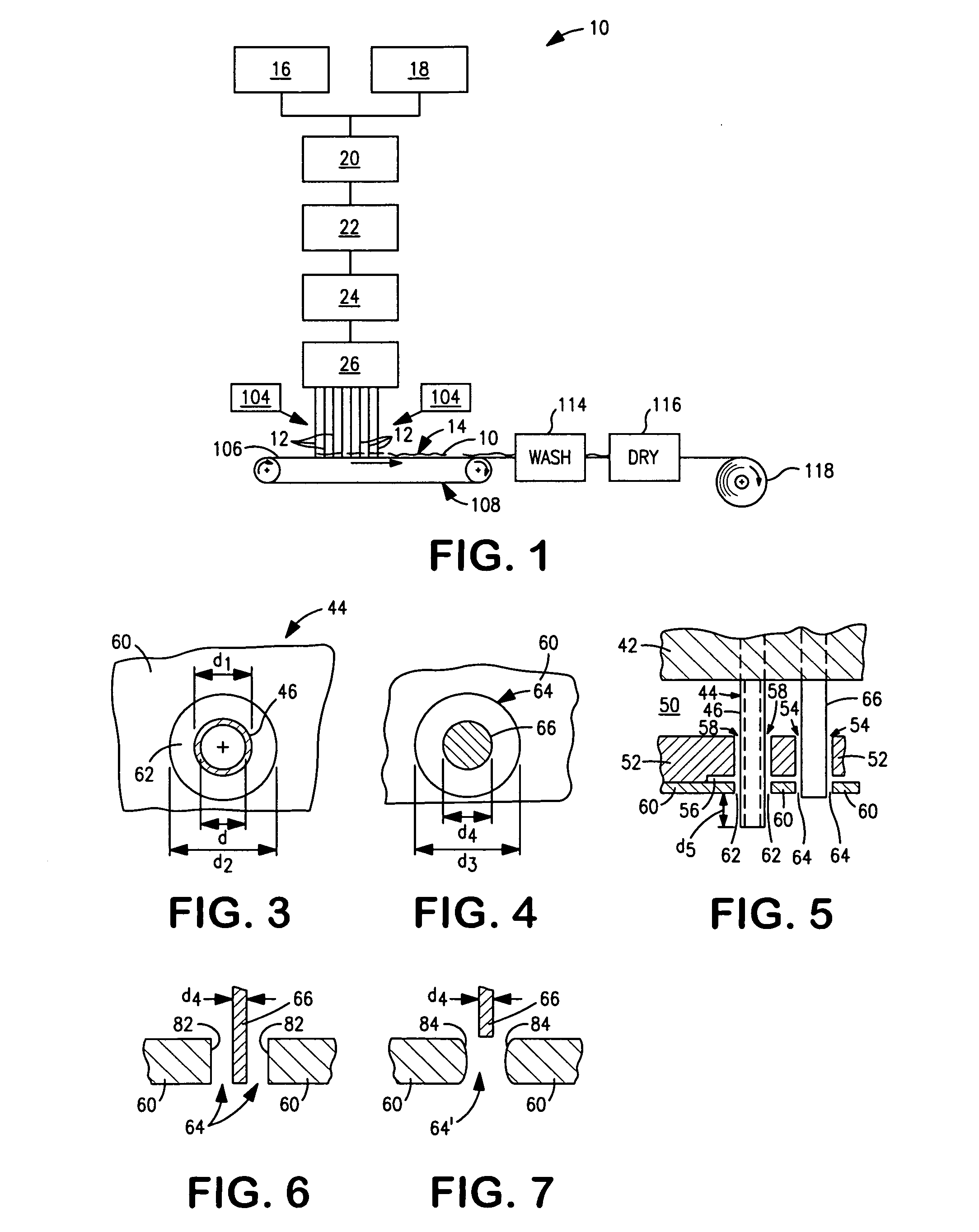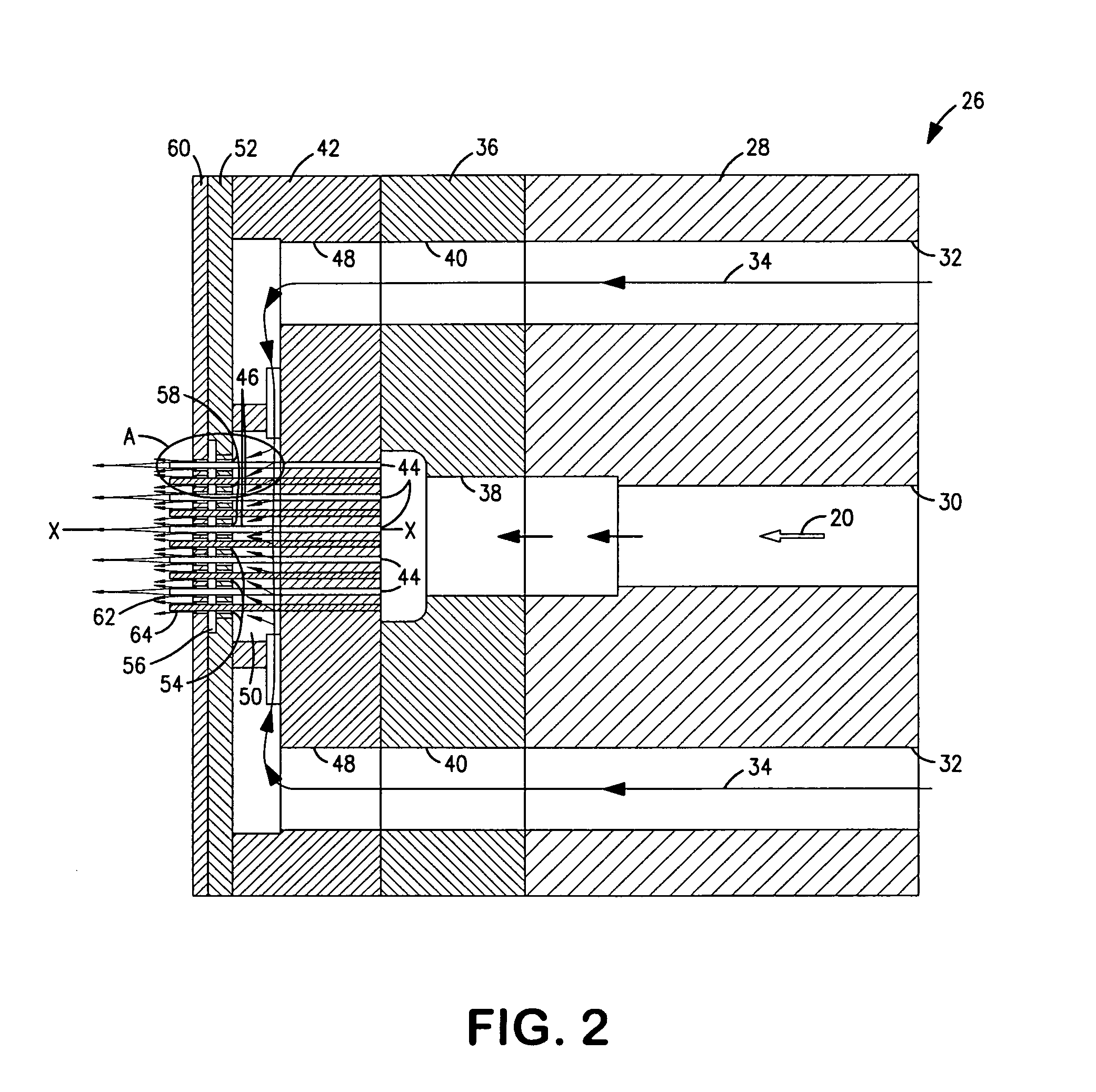Process of forming a non-woven cellulose web and a web produced by said process
- Summary
- Abstract
- Description
- Claims
- Application Information
AI Technical Summary
Benefits of technology
Problems solved by technology
Method used
Image
Examples
Embodiment Construction
[0032]Referring to FIG. 1, a process 10 of forming cellulose fibers 12 which can be formed into a non-woven web 14 is shown. The process 10 includes the steps of combining and dissolving cellulose 16 and a solvent 18 to form an aqueous solution 20. The aqueous solution 20 is commonly referred to as dope in the industry. The type of raw cellulosic material used can vary. Cellulose is a complex carbohydrate C6H10O5 that is composed of glucose units which form the main constituent of the cell wall in most plants. The cellulosic material may be bleached or unbleached wood pulp which can be made by various processes of which kraft, pre-hydrolyzed kraft, and sulfite would be exemplary. Many other cellulosic raw materials, including but not limited to: purified cotton linters, plants, grasses, etc. can also be used separately or in combination with wood pulp. The cellulose 16 can be wood pulp from any of a number of commercially available dissolving or non-dissolving grade pulps. Examples ...
PUM
| Property | Measurement | Unit |
|---|---|---|
| Temperature | aaaaa | aaaaa |
| Temperature | aaaaa | aaaaa |
| Temperature | aaaaa | aaaaa |
Abstract
Description
Claims
Application Information
 Login to View More
Login to View More - R&D
- Intellectual Property
- Life Sciences
- Materials
- Tech Scout
- Unparalleled Data Quality
- Higher Quality Content
- 60% Fewer Hallucinations
Browse by: Latest US Patents, China's latest patents, Technical Efficacy Thesaurus, Application Domain, Technology Topic, Popular Technical Reports.
© 2025 PatSnap. All rights reserved.Legal|Privacy policy|Modern Slavery Act Transparency Statement|Sitemap|About US| Contact US: help@patsnap.com



